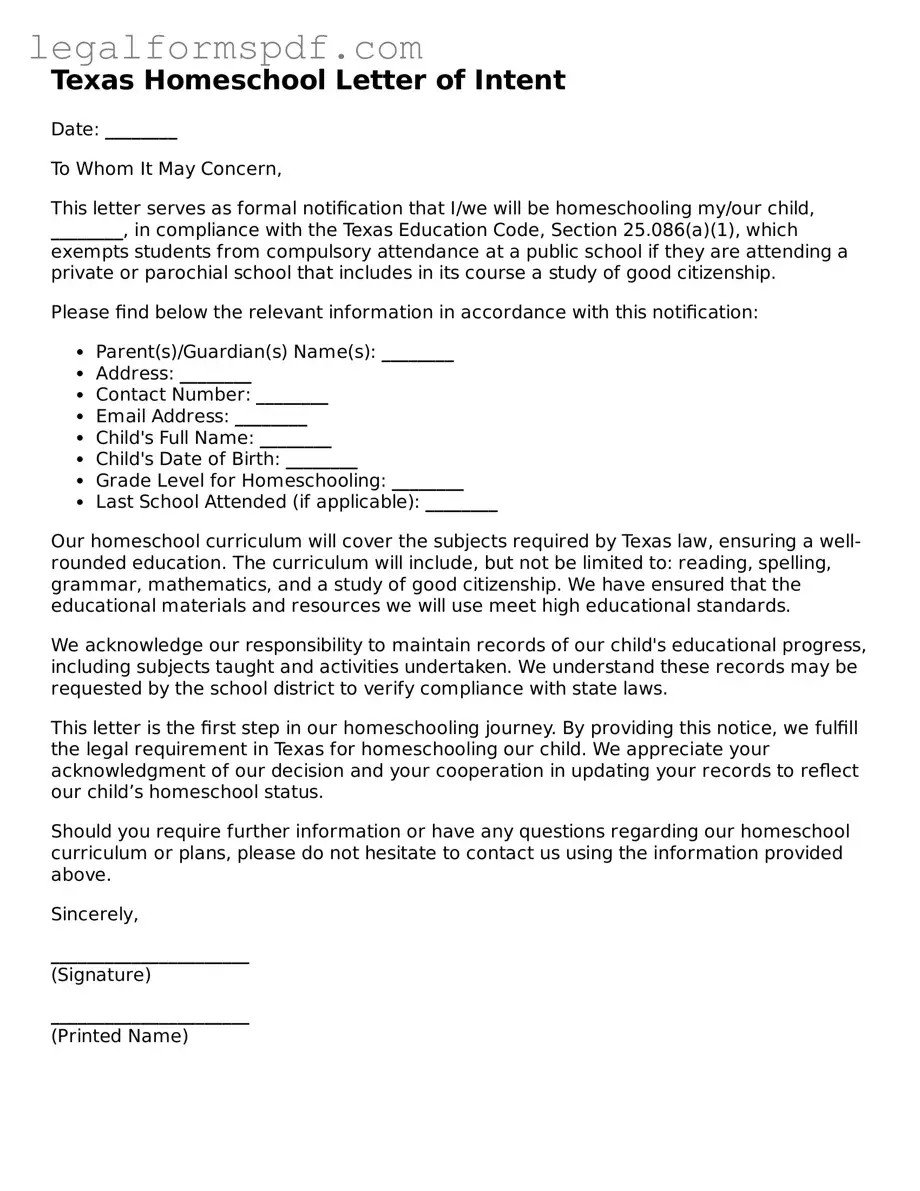What is a Texas Homeschool Letter of Intent?
A Texas Homeschool Letter of Intent is a formal document that parents or guardians submit to the local school district to notify them of their decision to homeschool their child rather than enrolling them in public or private schooling. This document is crucial for initiating a homeschooling program legally in Texas.
Do I need to submit a Texas Homeschool Letter of Intent every year?
No, you do not need to submit a Texas Homeschool Letter of Intent every year. Once you have submitted it to begin homeschooling, you are not required to resubmit annually. However, it's important to keep records and be prepared to demonstrate the educational progress of your child if requested by authorities.
What information should be included in the Texas Homeschool Letter of Intent?
The Texas Homeschool Letter of Intent should include basic information such as the parent's or guardian's name, the child's name, the address where the homeschooling will take place, and a statement of intent to homeschool. This statement acknowledges your responsibility for your child’s education and your decision to take on this role outside of the traditional school system.
Is there a deadline to submit the Texas Homeschool Letter of Intent?
No specific deadline exists for submitting a Texas Homeschool Letter of Intent, but it should ideally be submitted before the beginning of the public school year or within a reasonable period after withdrawing your child from public or private school to avoid truancy concerns.
Where should I submit the Texas Homeschool Letter of Intent?
The Texas Homeschool Letter of Intent should be submitted to the superintendent of your local school district. Mailing it through certified mail with a return receipt can provide a record of its submission and receipt.
What happens after I submit the Texas Homeschool Letter of Intent?
Once the Texas Homeschool Letter of Intent is submitted, your child is legally recognized as a homeschool student. You are not likely to receive an official response or approval from the school district, but the submission serves as your legal protection to homeschool. You should then follow the state’s requirements for curriculum and attendance records to ensure compliance.
Can I withdraw my child from public school to homeschool at any time of the year?
Yes, in Texas, parents or guardians have the right to withdraw their child from public school and begin homeschooling at any point during the school year. To do this legally, submit the Texas Homeschool Letter of Intent soon after making the decision to ensure your child is not marked truant.
Are there any specific curriculum requirements I need to follow after submitting the Texas Homeschool Letter of Intent?
While Texas law requires that a homeschool curriculum must be in visual form (e.g., books, workbooks, online programs) and must include the five basic subjects of reading, spelling, grammar, mathematics, and good citizenship, there is considerable flexibility for parents to choose the curriculum and educational materials that best fit their child’s needs. Homeschoolers are not obligated to follow public school standards or curriculum but should ensure a comprehensive education that meets general education goals.
